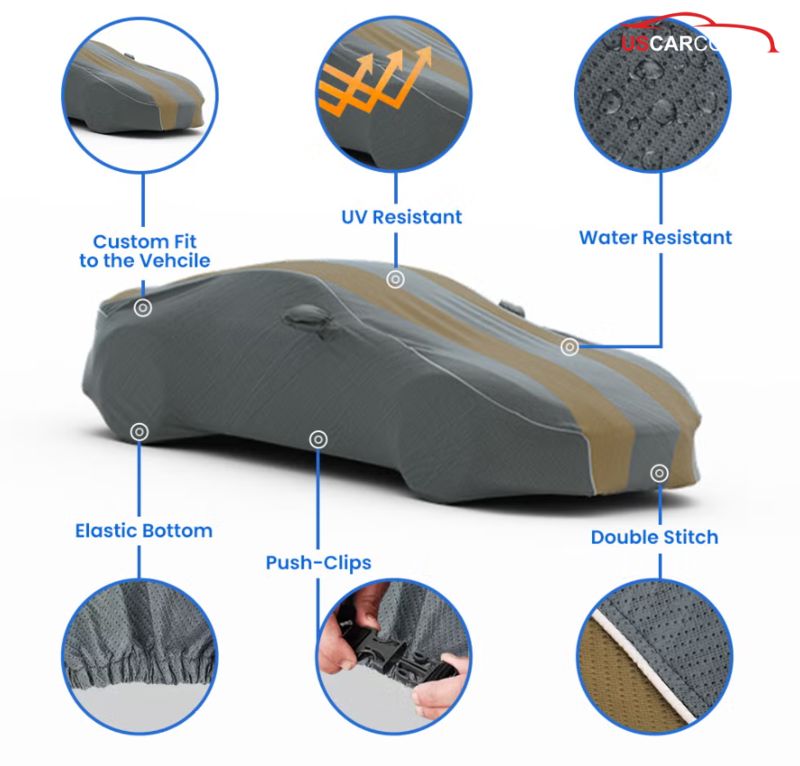
Dual-Ghia car cover is not just a sheet draped over a car. With a rare coachbuilt that marries an American chassis and Italian coachwork, the right-spec cover is a passive protection system that lets the car sleep for weeks or months while keeping its presence intact. Many owners in the United States have felt that pang when lifting a cover after a long pause: a faint musty breath from the cabin, small mildew specks lurking in the soft top’s folds, unusual speckling on chrome edges, and a few dull halos on the paint. This article goes deep into the root causes behind those “invisible” issues, explains why thicker covers trap more moisture, shows how to set up a safe storage environment, and details the standards for choosing and using a breathable, quick-dry, mildew-resistant car cover tailored to Dual-Ghia.
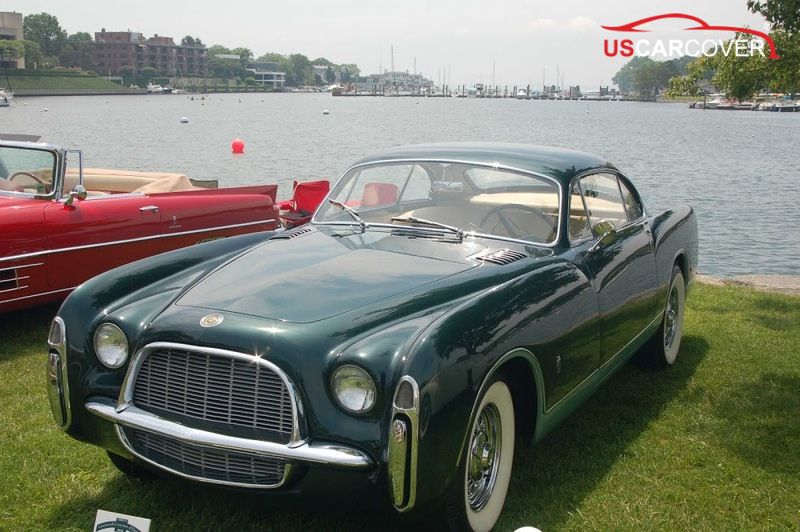
Related Articles: How To Protect Your Eagle: Compact tools that matter in your car
Portrait of Dual-Ghia from a storage perspective: exquisite beauty is also sensitivity
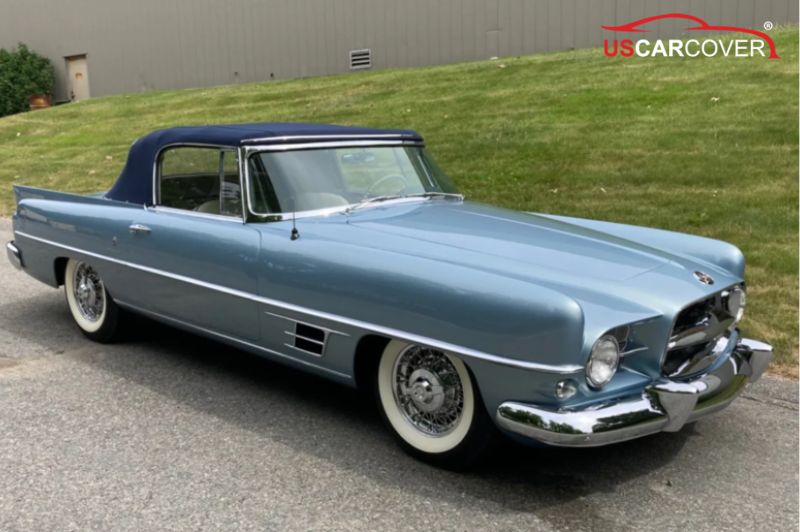
Dual-Ghia captivates with Italian-elegant proportions, mirror-like chrome trim, delicate panel transitions, and on many cars a hand-crafted fabric soft top. Every detail that defines its collectible value is also a sensitive point during long storage. Classic paint can drift in tone if moisture and temperature swing repeatedly. Chrome dislikes micro water beading. Soft tops and stitch lines take far longer to dry completely once damp. Coachbuilt geometry with crisp creases will create wind pockets if a free-size cover leaves excess fabric, letting the cloth billow and rub along paint edges night after night. Understanding that refinement is the first step to selecting a cover that truly hugs the car, lets it breathe and dry naturally, and still preserves the surfaces.
Related Articles: Edsel car cover: Scratch protection and minor bump safety under sun and rain
Why “indoors” still has problems

You do not need storms to have moisture. A concrete-floored garage that is cooler than surrounding air, plus nighttime rises in relative humidity, is enough to form micro dew on glass, chrome, and the soft top. In Florida and along the Gulf Coast, salty air and afternoon storms keep moisture clinging. The Pacific Northwest has persistent rain, so relative humidity runs high for many days in a row. Desert regions like Arizona and Nevada have large day-to-night swings, so surfaces reaching the dew point at dawn are common. Even a clean garage can condense moisture if an HVAC condensate line drips or a west-facing window admits slant sun that heats then cools the space. When a non-breathable cover is used, that moisture is trapped right against paint, fabric, and metal. It starts as a faint earthy odor, then tiny mildew specks on the soft top, along with small mineral halos on glass and chrome.
Why the thicker the cover, the more it traps moisture: the truth behind “totally waterproof” labels
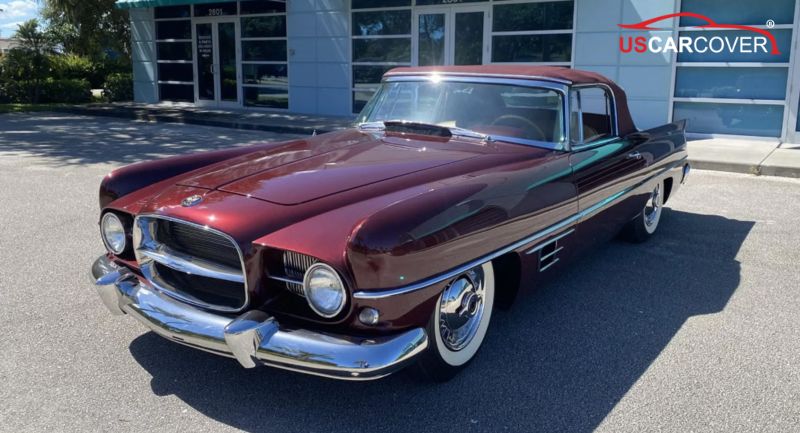
It is natural to assume the tighter the seal the safer the car. That may be right for a few stormy hours, but it is wrong for multi-week storage. A raincoat-like cover blocks droplets very well, but it also locks in what should leave from inside: residual wetness after washing, lingering night dew, engine bay heat that has not dropped yet, or simply high humidity inside the garage. That moisture ends up trapped against fabric, leather, and metal. Soft tops hold damp in folded areas, then it wicks into stitching. Chrome begins to show tiny white specks. The musty odor becomes a baseline smell in the cabin. The durable solution is a breathable, quick-dry car cover. It still blocks misting rain, yet allows moisture vapor to move outward steadily thanks to a multilayer fabric that truly breathes and roofed vents positioned in the right zones.
Related Articles: DeTomaso Car Covers - Reduce cabin temperature and which color cover is cleaner while keeping the car cool?
A “truly breathing” standard set for Dual-Ghia car cover
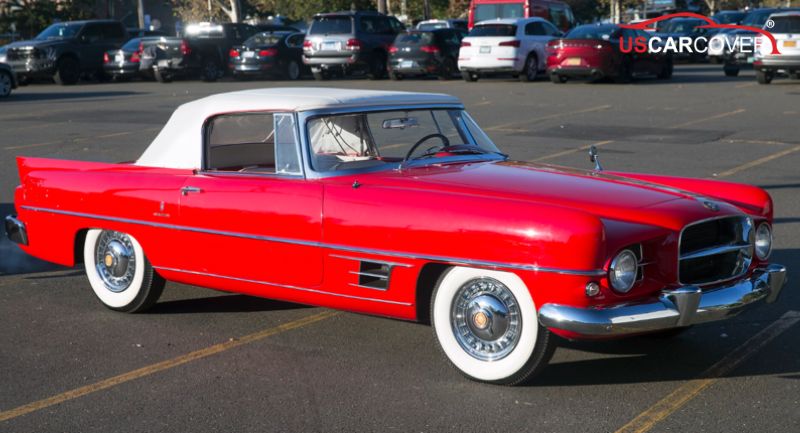
If you want to lift the cover after long storage and still find the car dry and fresh, the cover must meet three primary criteria plus a few supporting factors.
First, breathable and quick-dry. Quality multilayer fabric lets water vapor pass as vapor, reducing condensation. Roofed vents at the shoulders or near the rear glass allow heat to leave gradually without pulling in rain. The result is a cover that does not balloon after mist or when temperatures swing.
Second, an ultra-soft, light-colored, antistatic liner. The liner touches paint and soft top directly. Its surface must feel velvet-soft to avoid micro friction. A light color helps you detect odd marks early and address them in time. Antistatic behavior reduces fine dust adherence so each on-off is gentler on the finish.
Third, precise fitment for coachbuilt geometry. Dual-Ghia has distinctive lines. Free-size covers typically leave excess fabric at the tail and flanks, creating wind pockets that billow. Repeated rubbing along sharp creases and chrome trim builds dull tracks over time. A custom fit that hugs the body keeps the cover settled and limits repeated contact.
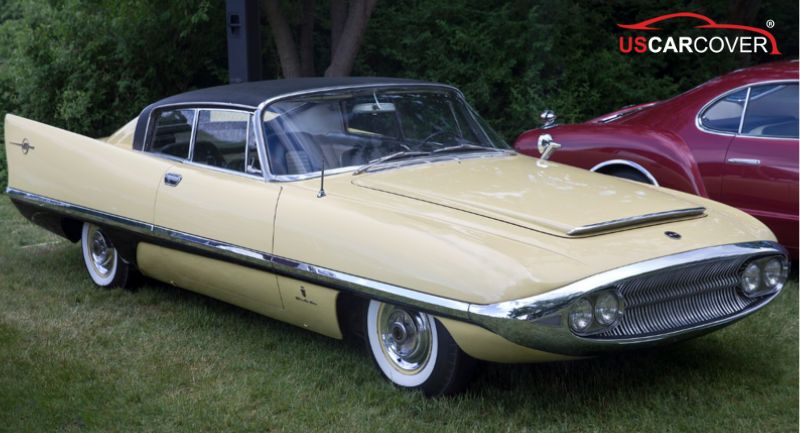
Helpful additions include a UV-resistant, heat-reflective outer skin in silver gray or light titanium to lower peak temperatures and extend fabric life. Reinforced grommets, soft wide tie-downs, and a plastic-coated underbody cable lock stabilize the cover mechanically and add passive security.
Related Articles: Dodge car cover: Ultra durable, compact, lightweight, and designed to dissipate heat
Choose by climate and actual parking context in the United States
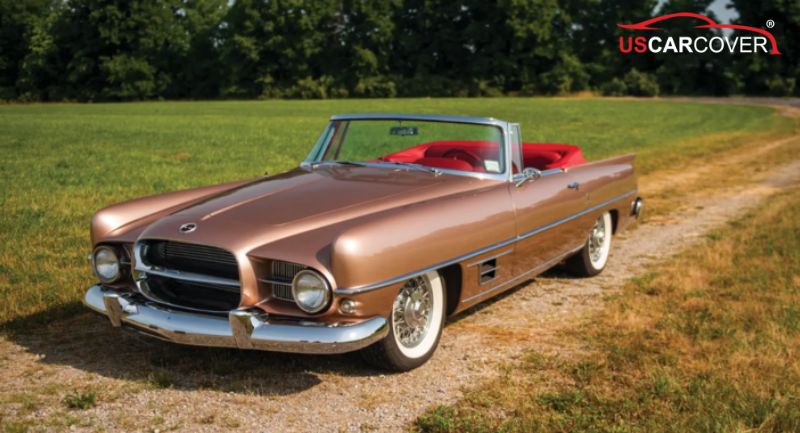
A good cover is one matched to the environment where it is used most:
In Florida and the Gulf Coast, air is humid and salty, with variable sun and showers. Favor quick-dry fabric, roofed vents, and a low-stick outer face so salt residue shakes off easily. Before long storage, dry brightwork and apply a thin protective layer on chrome to limit white speckling.
In the Pacific Northwest, persistent rain keeps relative humidity high. You need truly breathable fabric, tight seams, and a full air-dry in shade before storing. Shorter wash intervals keep the liner smooth and prevent it from turning gritty.
In New England, spring pollen runs heavy and fall brings cool damp. A low-stick outer face helps you shake the cover clean each morning. An ultra-soft liner lets you cover and uncover daily without adding swirl marks. A gentle elastic hem avoids imprinting paint on cold days.
In Arizona, Nevada, and inland California, sun is intense and temperature swings are large. A reflective silver outer skin and effective vents lower daytime heat and reduce dew formation at night. A low-dust outer face makes ash or fine grit easy to shake off.

Across the Rockies and the Midwest, cold dry air brings deep freezes. A reflective outer face helps moderate sudden material expansion and contraction. A soft liner protects paint when temperatures fluctuate. Multi-point tie-downs keep the cover in shape under cold winds.
Related Articles: DeSoto car cover: why classic two-tone paint drifts out of balance if you do not cover correctly
Set the foundation for safe storage: 3 clean, 3 dry, 1 stable
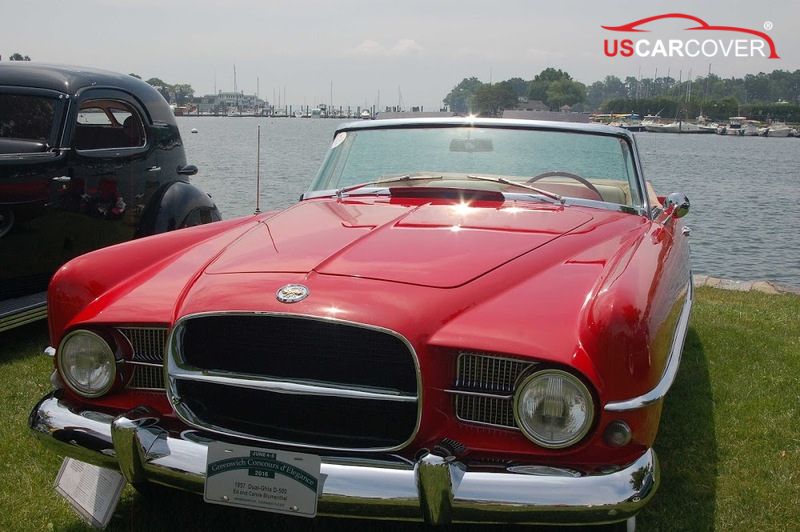
Before covering, follow a short but thorough routine. Clean the exterior by washing or careful wipe-down, especially the soft top, chrome edges, and glass seams. Clean the cabin by vacuuming, removing organic trash, and tidying so odor sources are limited. Clean the liner by lint-rolling or light vacuuming if you last used the cover outdoors. Then focus on dry: dry exterior spots that hold water like trim edges, glass, and seams. Dry the soft top by ventilating and blotting folds. Dry the liner completely before reinstalling. Finally, stabilize the garage environment. Adjust sprinklers so mist does not drift onto the car, maintain basic air circulation, and if the garage runs humid, use a dehumidifier to hold relative humidity in a comfortable band.
Cover on and off technique in 90 seconds
A tidy habit turns covering into a natural move. Place the front hem at the nose emblem, smooth straight along the roof spine so the cover self-centers. Seat mirror pockets snugly, release the elastic hem softly at all four corners, then smooth the entire surface to remove folds. Engage soft wide straps, distribute tension evenly side to side, and avoid cranking a single point tight. Open roofed vents toward the breeze so heat exits gradually. If people pass nearby, run the plastic-coated cable under the car and lock it at the reinforced grommets. When removing, shake the outer face, roll with the liner turned inward, hang for a few minutes to let the cover breathe, then store it in a ventilated bag.
Related Articles: DeLorean car cover: block pollen, tree sap, and bird droppings, quick scratch
Quarterly routine for a sleeping car: let it breathe, rotate tires lightly, wash the cover on schedule
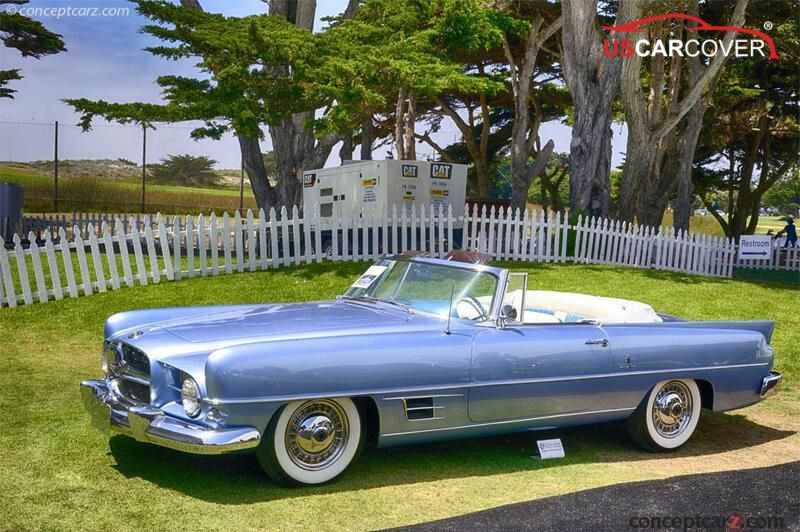
At roughly day 30, lift the cover for 10 to 15 minutes so both car and cover can breathe, and inspect five sensitive points: chrome edges, stitch lines in soft-top folds, roof spine, raised emblems, and hood edge. If the garage shows humidity, extend ventilation time. At day 60, roll the car a short distance to change tire contact patches, crack the windows briefly for fresh air, then re-cover using the standard routine. At day 90, wash the cover with mild soap, air-dry completely in shade, lint-roll or lightly vacuum the liner, and inspect stitching and grommets for timely reinforcement.
Early detection and quick fixes: moisture, musty odor, soft-top mildew, mineral spots
When a faint musty odor appears, pause covering for 48 hours, ventilate the garage, and use a dehumidifier to hold relative humidity around 45 to 55 percent. Inspect soft-top folds. If you find dark dots, dab gently with a clean cloth and a mild solution, then air-dry with cool airflow. For tiny mildew specks on the soft top, act early so fibers do not get deeply colonized. Clean gently per material guidance, dry fully, then cover again. When chrome shows speckling, remove mineral residue, dry thoroughly, and check moisture sources like sprinklers or condensate. Adjust vents to improve moisture exit. If you notice a dull mark on paint, it is likely micro friction from dust trapped between cover and paint. Pause covering for one to two days, wash lightly, dry thoroughly, confirm the liner is clean and soft, and increase the wash cadence for the cover while dusting the car before each use.
Related Articles: Daimler car cover: Long-term storage, quick drying, no musty odor, no veneer stains
Q&A
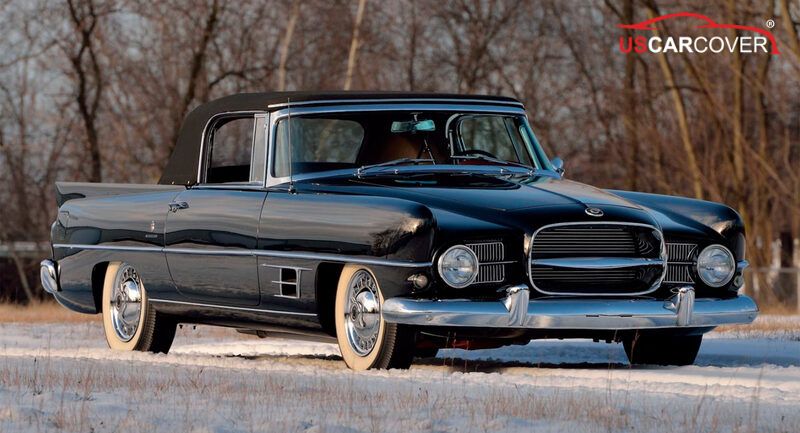
Do I need a Dual-Ghia car cover in a closed garage:
- Yes. Closed garages still have humidity, micro dew, and fine dust. A breathable, soft-lined cover limits moisture cling, keeps surfaces clean, and prevents cabin odors
Is a fully waterproof cover suitable for long storage:
- Not necessarily. Long storage needs ongoing moisture release. An overly sealed cover traps vapor, leading to musty odor, mildew, and mineral spotting. Choose a cover that blocks mist yet breathes with vents
How do I prevent soft-top mildew during long covering:
- Make sure the top is completely dry before covering, use a breathable quick-dry cover, and open roofed vents with the breeze. Each week, lift the cover for a few minutes so the car can breathe and you can spot early specks

Related Articles: How to Protect Datsun from Harsh Sun and UV: keep paint and interior looking new
Storing a Dual-Ghia in a preservation-minded way is not just pulling a cover over it. It is creating a mini ecosystem that includes a stable garage environment, a Dual-Ghia car cover that meets breathable quick-dry standards with an ultra-soft light liner and precise fitment, plus a 90-second cover routine and a clear periodic care schedule. When all of that runs smoothly, musty odor has no chance, the soft top keeps mildew at bay, chrome stays bright, and paint stays true to tone. Each time you lift the cover, worry is replaced by the calm satisfaction of protecting a beautiful coachbuilt work properly.
